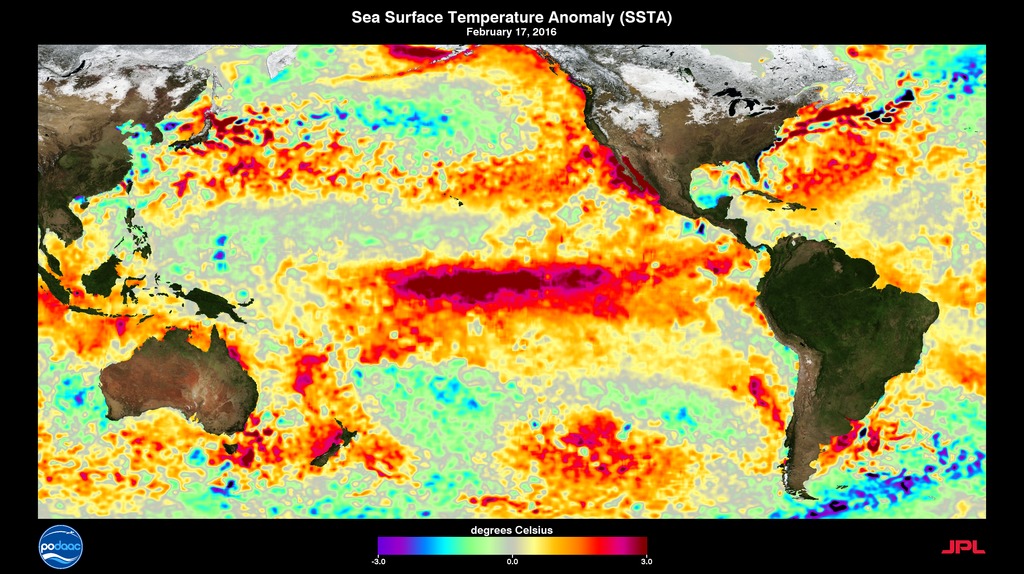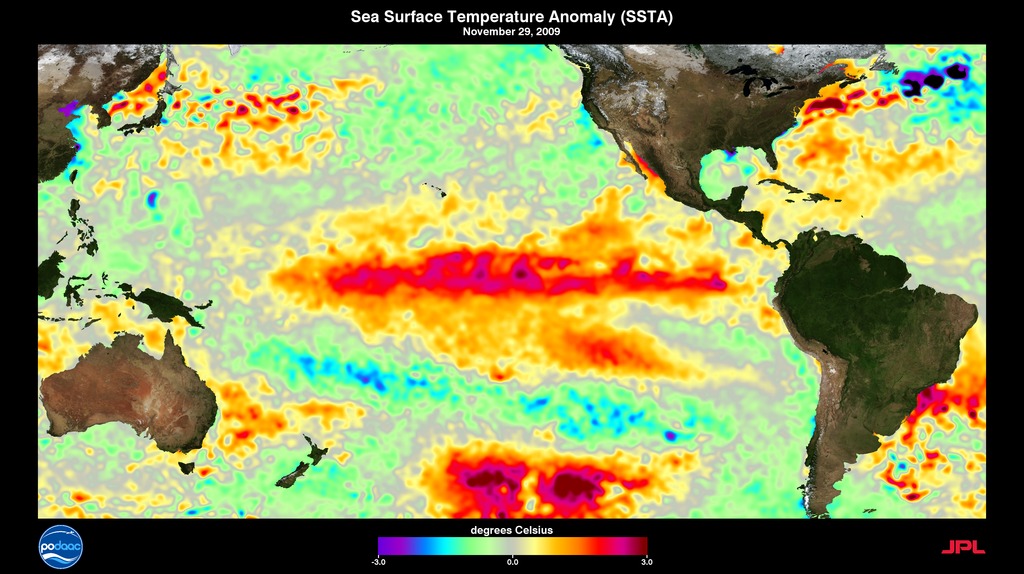ENSO Sea Surface Temperature Anomalies: 1997-1998
Sea Surface Temperature Anomaly during the the 1997-1998 ENSO event.
The El Niño-Southern Oscillation (ENSO) is a quasi-periodic fluctuation of ocean temperatures in the equatorial Pacific. The temperatures generally fluctuate between two states: warmer than normal central and eastern equatorial Pacific (El Niño) and cooler than normal central and eastern equatorial Pacific (La Niña).
The 1997-98 event was the first major El Niño that was observed extensively by satellites, including those that measured SST and sea surface height (SSH). These measurements are helpful to examine the evolution of an El Niño event. The animation illustrates the evolution of sea surface temperature anomaly (SSTA) associated with the1998-1998 El Niño in the Pacific Ocean.
For More Information
Credits
Please give credit for this item to:
NASA's Jet Propulsion Laboratory
-
Animator
- Charles Thompson (NASA/JPL CalTech)
-
Scientist
- Michelle M. Gierach (NASA/JPL CalTech)
-
Project support
Release date
This page was originally published on Wednesday, November 19, 2014.
This page was last updated on Sunday, February 2, 2025 at 12:28 AM EST.
Datasets used
-
GHRSST Level 4 AVHRR_OI Global Blended Sea Surface Temperature Analysis [InSitu and NOAA 16, 17, 18, 11, 7, 9, 14: InSitu and AVHRR-3 and AVHRR-2]
ID: 843
Note: While we identify the data sets used on this page, we do not store any further details, nor the data sets themselves on our site.

